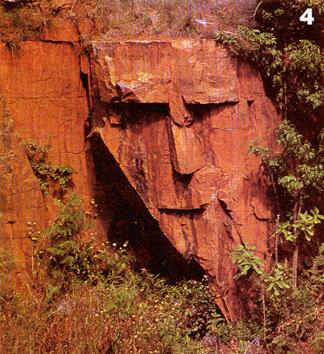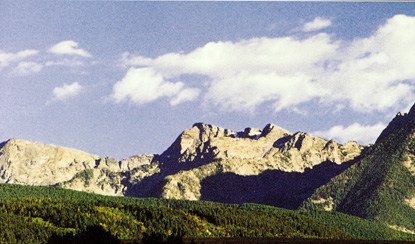
pic via Essdras M Suarez/Boston Globe
Matthew Day Jackson: The Immeasurable Distance
Contemporary Arts Museum Houston
5216 Montrose Boulevard
Open Tues. – Saturday (10 am – 5 pm), Thurs. (10 am- 9 pm), and Sun. (12 pm- 5 pm)
Through January 17, 2010
With a bushy russet beard, wearing disheveled clothes and riding a BMX bike, Matthew Day Jackson pedaled back and forth across Marfa. His brown eyes cast a friendly glow on any face he came across in the windswept West Texas town. As he went from house to house meeting, greeting, drinking and laughing, Jackson built up the kind of goodwill that usually follows gurus, gamblers and ice cream trucks. Five years after those sun-parched days in the desert his mind is ensconced here in Houston at the Contemporary Arts Museum as “The Immeasurable Distance”- a fitting title for his collection of resin-soaked memorabilia by an earnest mind let loose.
Overtly curious, with a wide-ranging appetite for pop culture, Jackson’s work toes the line of conceptual art without engaging in the pretension that plagues esoteric aristocrats like Vanessa Beecroft and Matthew Barney. At first glance Jackson’s artworld bona fides are firmly intact, but his childlike guile keeps even the most mortifyingly informed insiders on their toes spinning bullshit into gold thread. Composed of readymade elements, each with their own set of innuendoes, Jackson’s work is sculpture, painting and installation- a coherent context holding various disciplines together. Within his mind pulsating like a thick bass line, everything moves together. Gone are the days of the categorical museum, Jackson is bringing back the reign of the wunderkammer.

Garden of Earthly Delights (Spiritual America), 2008
Matthew Day Jackson’s work came to town in 2008 as a part of Toby Kamps’ “The Old, Weird America” and returns this year as a solo show courtesy Bill Arning, who first arranged for “The Immeasurable Distance” to be exhibited in Boston at MIT while he was the director. Both curators see his work as a call for social progress, a break from the cyclical nature of human existence. In “The Old Weird America” Jackson’s Garden of Earthly Delights (Spiritual America) was an edgy, dark take on fallibility and legitimacy. Tenuously based on Hironymous Bosch’s triptych of the same name and a recent exhibit by the king of art thieves Richard Prince, Garden consisted of a group of black-framed modified posters and a snaking vitrine filled with oddities. An Evil Dead poster is cut into a psychedelic landscape, zombies cheering on Sputnik in grey wool suits. The title character from the 1977 film Sasquatch becomes Joseph Beuys scaring a caravan of cowboys forwarding a river. Hopper and Fonda from Easy Rider roll upside down across the USA. Fake taxidermy fairies, Wally Wood’s Disneyland Memorial Orgy, astronauts and the ’68 Olympics all make appearances in this sprawling installation. Without a serious leap of faith the elements may remain inert but with the right mix of faith and paranoia the aesthetic experience becomes a reprieve from heavy handed messages and a DIY journey to one’s own sense of understanding.

“The Immeasurable Distance” is that experience writ large, and I must recommend getting really high on weed before attempting to fully enjoy the virtuoso stonership that the exhibit displays. If nothing else you’ll need to do it just so you can see the human visages on rock faces across America that Jackson spent months and thousands of miles documenting. Conceived as a response to the artist’s residency at the Massachusetts Institute of Technology, “Distance” looks at science as a layman, far enough from the content to appreciate the aesthetics of categorization, preservation and simulation. Study Collection is a long steel shelving unit with a series of series; mock-ups of American missile systems from Fat Man and Little Boy to Cruise missiles, skulls morphing out of geometric forms and crude human limbs fused to tree branches. It is an amazing work to take in, the viewer walking back and forth examining objects, measuring differences, making references and noting new elements. Looking to the past, August 6th, 1945 documents Hiroshima and Washington DC on the last day of WWII, when atomic bombs were dropped on Japan. The streets are paved in lead, and buildings are nothing more than charred stumps in jagged geometric patterns. Through reversals and reexaminations Jackson takes on the legacy of the American 20th century from a myriad of perspectives.
The issue of immeasurability comes to the fore in Tensegrity Biotron, a large cube divided by mirrors and lit by neon tubes. Casts of the artist’s bones hang suspended in the case and as one looks through the box mirrored angles extend into infinity, multiplying bones and bright neon lines into the thousands. Keep staring. Further and further into space. All things considered, Jackson may search for the long look that carries us into the future but inside his earnestness is a clear grasp of the here and now, the disjointed realities of contemporary life that keep us tied to this earth and our own problems. The artist’s intent fades into the subconscious as the viewer’s context adds meaning to the objects and ideas presented to it. If the new century of art has anything to bring to the table, it is a better sense of our selves instead of any single narrative striving to lift humanity out of the mire of boom and bust, truth and lies or right and wrong. Jackson brings it to us today.


























1 comments:
you don't need to get stoned to see the rock faces...
Post a Comment